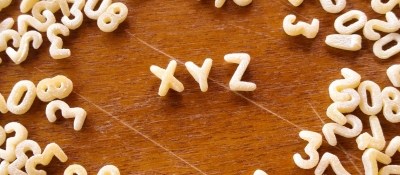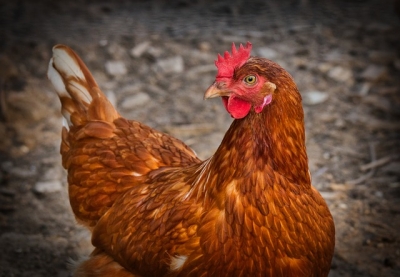
Have you heard the phrase “any x, y, and z”as in“I don’t have to worry about every x, y or z?
We use these last three letters of the alphabet when we want to refer to some unknown people. Though these are merely letters, they stand for people. We use these three alphabets in maths, in algebraic equations. Where did they come from? How did they become important?
The origin of x
Some people think that the letter X is used to represent the unknown in both English and Mathematics because the letter has had to struggle to establish its identity. Interesting theory, right?
X is derived from the Phenician letter samekh, meaning “fish.” It was used by the Phoenicians to represent the /s/ consonant (denoting a hard S sound), the Greeks borrowed the samekh around 900 BC and named it Chi.
Once they became masters of the arts, the ancient Greeks set about to simplify the digraph (“a pair of letters representing a single speech sound”) /ks/, which is used most prominently throughout the western regions of Greece. So the X was born.
The Romans later adopted the X sound from the Chalcidian alphabet, a non-ionic Greek alphabet. They borrowed the Chi symbol, consisting of two diagonally crossed strokes, from the Greek alphabet to denote the letter. This symbol also represents the Roman numeral X or “10”.
In other words, the Romans took the /x/ sound from one alphabet (Chalcidian) and combined it with the Chi symbol from another alphabet (Greek) and thus X was born.
The X has been around for ages and has had different stories and sounds associated with it. It can mean Christ, like the X in Xmas, stand for a chromosome, and even show up in friendly letter writing (XOXO).
How to say x
In its pronunciation, the letter X has been compared to a chameleon. For example, X is used to establish the /ks/ sound (called “voiceless velar fricative”), as in wax and fox. To get this sound, you place the back of the tongue at the soft palate. You do the same for X’s/ gz/ sound, as in auxiliary and exhaust. X can also take on the /z/ sound as in xylophone and Xanadu, the hard /k/ sound as in excite, and /kzh/ as in luxury. The X can also be silent as in Sioux (Falls), and the French loan-word faux.
The origin of y
Y came in late to join the English alphabet. It was called ipsilon in German, upsilon in Greek, but we do not clearly know what it was called in English. The Y sound as in yard, yes, yield is from Old English words with initial g- as in got and y- as in yet, which were considered the same sound. These were written as 3, known as yogh. The system was altered by French scribes, who continued with the way Europe used –g- and from the early 1200 s used –y- and sometimes –gh- to replace3.
This is how it was formed.
Y started its journey in Classical Greek as –ik (os) and went to Classical Latin –ic (us). In Old English, it was recognised as –ig and in Middle English it became –y.
Y, as you know, is used to make adjectives from nouns. Example: Snow – snowy. Having, full of, or characterized by: dirty, healthy rather, somewhat: yellowy, chilly, dusky inclined or tending to: drowsy, sticky suggestive of, somewhat like: wavy fit or suitable for: Christmassy quality or condition: jealousy, zoanthropy a shop or goods of a (specified) kind: coopery a collective body of a (specified)kind: soldiery It is there for terms of endearment – for “little dear.” [kitty, Billy, daddy]
The origin of Z
Z’s history includes a time when it was used so rarely that it was removed from the alphabet altogether.
Where did Z come from?
The Greek zeta is the origin of the letter Z. The Phoenician glyph zayin, meaning “weapon,” had a long vertical line capped at both ends with shorter horizontal lines and modern capital I.
Then it evolved into the Greek zeta. The top and bottom lines became elongated, and the vertical line got slanted, connecting to the horizontal lines at the top right and the bottom left. It finally looked like what we call Z today.
Why did Z get removed from the alphabet?
Around 300 BC, the Roman Censor Officer Appius Claudius Caeus removed Z from the alphabet. He pronounced the letter Z as archaic (old-fashioned.) He said the pronunciation of /z/ had became /r/ by a process called rhotacism, rendering the letter Z useless.
How did Z get added back?
Two hundred years after Appius Claudius Caecus threw the letter Z out, Z was reintroduced to the Latin alphabet. At the time, it was used only in words taken from Greek. Because of its absence and reintroduction, zeta is one of the only two letters to enter the Latin alphabet directly from Greek and not Etruscan.
Z was not always the final letter of the modern English alphabet, although it has always been in the 26th position. For years the & symbol (now known as the ampersand) was placed at the end, When pronounced “and.” When people recited the alphabet, Z was said with the Latin “per se,” meaning “by itself.” The position and pronunciation eventually got clubbed together: “X, Y, Z, and per se and” became “X, Y, Z, and ampersand.”
These days Z is the least used letter in the alphabet, though American English uses it more often than British English. Early English did not have a Z but used s for both voiced and unvoiced soft consonant sounds (sibilants). Words in English that originated as loan words from French and Latin are more likely to be spelled with a Z than an S, such as blazon or buzzard. Also, American standardization modified /z/ suffixes to more accurately reflect their pronunciation, changing –ise and –isation to –ize and -ization.
Picture Credit : Google



